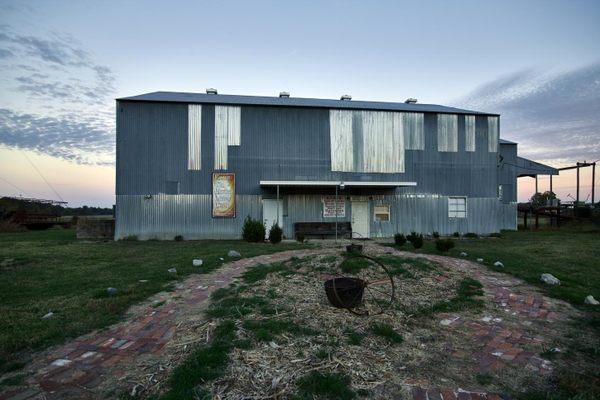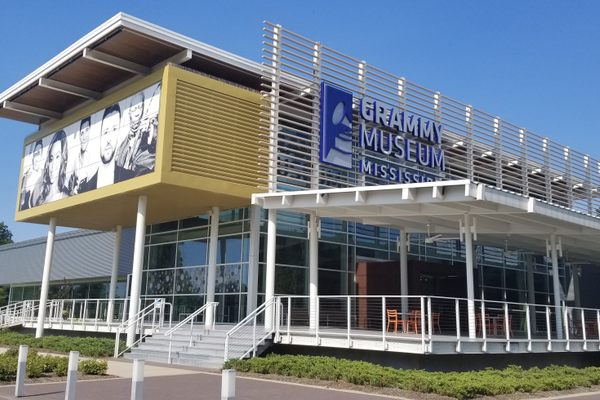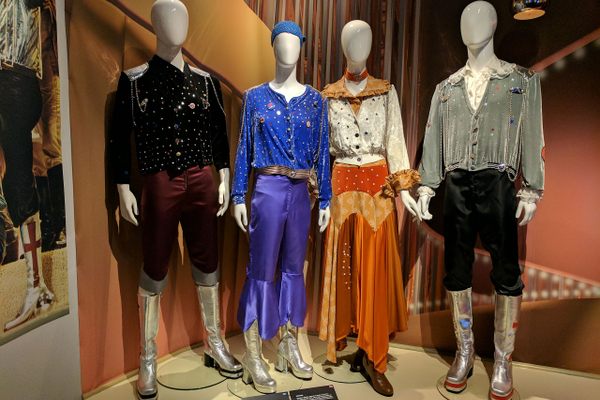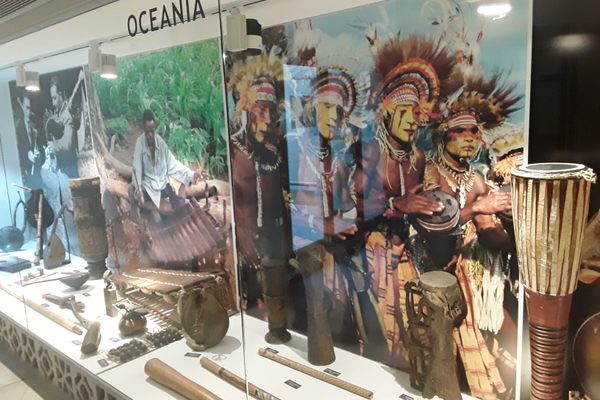AO Edited
Muddy Waters’ Cabin
The centerpiece of the Delta Blues Museum is a wooden sharecropper’s cabin that once housed a titan of blues music.
In 1941, ethnomusicologist Alan Lomax traversed the Mississippi Delta taking field recordings of blues musicians for the Library of Congress. The recordings disseminated the early works of many now-iconic blues acts, including Son House and David “Honeyboy” Edwards. Lomax recorded one guitarist named McKinley Morganfield in the very sharecropper’s cabin in which he lived.
Morganfield went on to become Muddy Waters, six-time GRAMMY Award® winner, and “The King of the Chicago Blues,” while his cabin would go on to become the centerpiece of the Delta Blues Museum.
Waters’ birthplace, and year for that matter, are unknown, but he was raised in this cabin by his grandmother—after his mother passed away—who nicknamed him “Muddy” for his childhood penchant to play in it. After learning to sing at church and how to play guitar from Son House and Big Bill Broonzy, Waters would put on performances for other fieldhands in the cabin, making it something of a makeshift juke joint for a time. He played around Mississippi alongside established musicians, but it was hearing Lomax’s 1941 recordings played back to him that gave Waters the confidence to journey north—like so many contemporaneous Delta blues musicians did—to Chicago. He left in 1943 to become Muddy Waters, but the cabin stayed.
After his passing in 1983, blues fans made something of a pilgrimage out of visiting the humble shack. When a tornado destroyed the roof, the Mississippi Highway Department threatened to trash the remains for safety concerns. At some point, Billy Gibbons of ZZ Top (a Waters superfan) snagged a cypress beam which he would build into two “Muddywood” guitars—one of which now sits in the Delta Blues Museum and symbolizes rock ‘n’ roll’s indebtedness to the blues.
Luckily in 1990, the House of Blues decided to dismantle the cabin, treat the wood, and reassemble it as a traveling exhibit. It toured major cities from New Orleans to Canada and was even featured in the 1996 Olympic Games in Atlanta. In 2001, a new wing was developed in the Delta Blues Museum just to house the well-traveled shack.



















Follow us on Twitter to get the latest on the world's hidden wonders.
Like us on Facebook to get the latest on the world's hidden wonders.
Follow us on Twitter Like us on Facebook